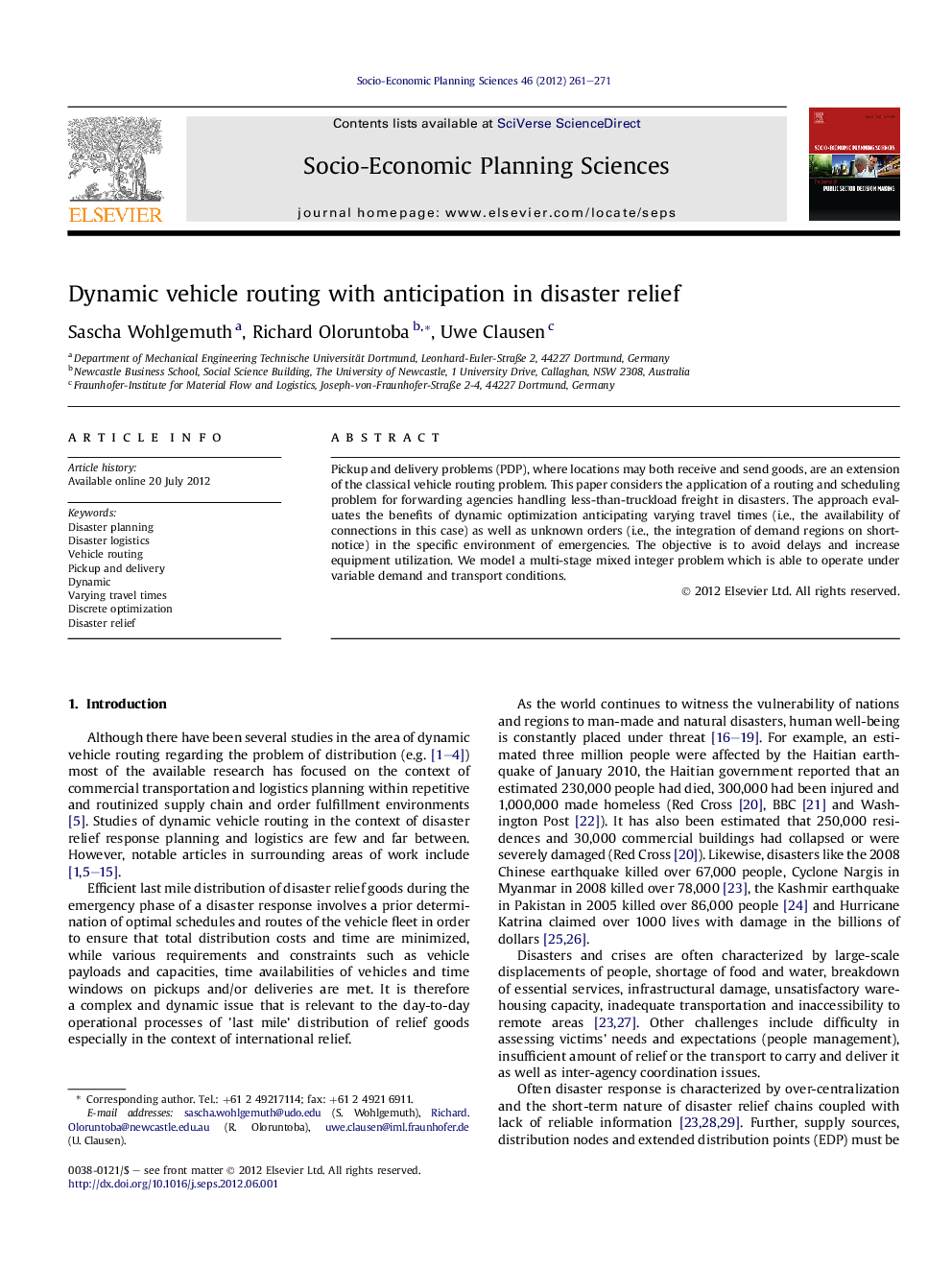| Article ID | Journal | Published Year | Pages | File Type |
|---|---|---|---|---|
| 987121 | Socio-Economic Planning Sciences | 2012 | 11 Pages |
Pickup and delivery problems (PDP), where locations may both receive and send goods, are an extension of the classical vehicle routing problem. This paper considers the application of a routing and scheduling problem for forwarding agencies handling less-than-truckload freight in disasters. The approach evaluates the benefits of dynamic optimization anticipating varying travel times (i.e., the availability of connections in this case) as well as unknown orders (i.e., the integration of demand regions on short-notice) in the specific environment of emergencies. The objective is to avoid delays and increase equipment utilization. We model a multi-stage mixed integer problem which is able to operate under variable demand and transport conditions.
► We model a pickup and delivery problem which can be applied in case of disasters. ► We analyze the benefits of anticipating travel times and orders in emergencies. ► Anticipation is successful with dispersed locations and a high degree of dynamism. ► Improvements in vehicle utilization and routing in case of disasters are achieved.
